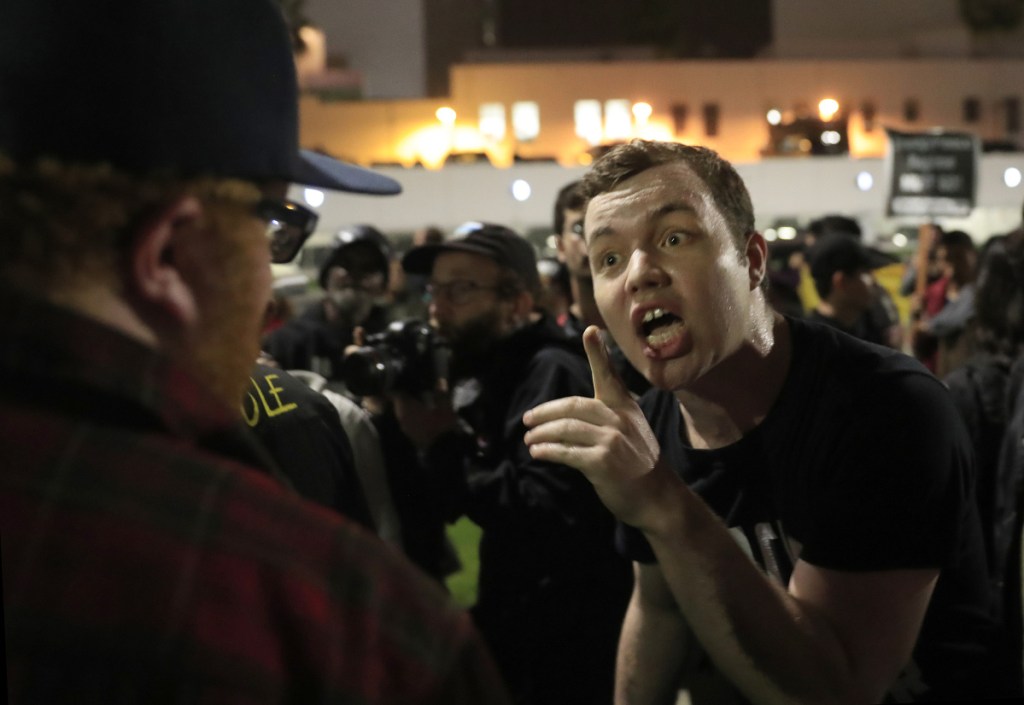WASHINGTON — Drop into a political gathering almost anywhere in America, and you can usually name the party just by looking: Democrats increasingly reflect the racially mixed demographics of the nation’s cities; Republicans remain overwhelmingly white, older and more rural.
That hasn’t always been true – a generation ago, the voters supporting the two parties were far more alike.
Now, a new, large-scale study has documented how much the mix of voters who support each of the two parties has changed. The conclusion: The two party coalitions are now more different than at any point in the past generation.
The Democrats have changed the most, as the mix of voters who support them has grown less white, less religious, more college-educated, younger and more liberal over the past decade, according to the study by the nonpartisan Pew Research Center.
Republican voters, by contrast, more closely reflect the demographics of an earlier, mostly white, Christian America. In one regard, the party’s voters have actually stepped slightly back in time – Republicans are less likely today than a decade ago to be college graduates, Pew found. That’s a striking fact in a country that has steadily grown more college-educated.
Diverging COALITIONS
“Republicans have not changed as the country has changed,” said Carroll Doherty, Pew’s director of political research.
The numbers, drawn from 10,000 voter interviews that Pew conducted last year, paint a detailed picture of the coalitions behind each of the two major parties. They underscore an important point about the polarization that so dominates national politics: Although Americans often blame politicians for not compromising, elected officials represent voter bases that each year have less and less in common.
Overall 50 percent of registered voters identify as Democrats or as independents who lean Democratic, Pew found. By contrast, 42 percent either identify as Republicans or lean toward them.
A much smaller group identifies as independent and does not lean to either party.
The 50 percent figure marks an uptick for Democrats. It’s the first time since 2009 that half of registered voters in Pew’s surveys have identified as or leaned toward the Democrats. The 8 percentage-point margin over the Republican party is the largest the Democrats have enjoyed since then and is consistent with other polling data showing the Democrats gaining ground since President Trump’s election.
But the share of voters overall who support each party has changed just a little. By contrast, the types of voters behind each party has changed a lot. The changes among Democrats have shifted the party to the left. A decade ago, the largest group of Democrats, 44 percent, described their views as “moderate.” Today, the largest group, 46 percent, identifies as “liberal,” with 37 percent calling themselves moderate and 15 percent conservative.
Republicans have been a mostly conservative party for years and continue to be so, with about two-thirds identifying themselves as conservative, 27 percent moderate and just 4 percent liberal.
SHIFT TO DEMOCRATS
Democrats have benefited from two of the biggest shifts in recent years – the movement of women and college graduates in their direction.
On the other side, Republicans have gained loyalty among white voters without a college degree. They now hold a bigger advantage among that group – which remains the largest demographic group in the electorate – than at any point in more than two decades. Republicans have also gained in rural areas.
Trump’s winning campaign in 2016 took advantage of those trends – driving up turnout among non-college white voters in some key states. But his emergence as the face of the GOP also appears to have accelerated shifts away from the party, endangering its hold on Congress this year.
Trump almost certainly has contributed to the movement of women toward the Democrats, a long-term trend that gained strength in the past two years. More than half of women, 56 percent, now side with the Democrats, compared with 37 percent for the Republicans, Pew found.
By contrast, the partisan split has not changed much among men: 48 percent identify with the Republican Party or lean Republican, while 44 percent are Democrats or lean Democratic.
The president also seems to have energized the educational divide. Voters with a college degree, who now make up a third of the U.S. electorate, increasingly cast Democratic ballots.
As recently as the George W. Bush administration, most college graduates favored Republicans. Today, the share of college-educated voters who either identify as Democrats or lean to them, 58 percen. By contrast, the share of college graduates who either identify as Republicans or lean toward them has fallen to 36 percent.
Because minority voters of all educational levels heavily side with the Democrats — nonwhites make up nearly 40 percent of Democratic voters but only 14 percent of Republican voters — the divide by education level is most noticeable among whites. White college graduates side with the Democrats 53 percent-42 percent. As recently as two years ago, white college graduates were evenly split.
Send questions/comments to the editors.



Success. Please wait for the page to reload. If the page does not reload within 5 seconds, please refresh the page.
Enter your email and password to access comments.
Hi, to comment on stories you must . This profile is in addition to your subscription and website login.
Already have a commenting profile? .
Invalid username/password.
Please check your email to confirm and complete your registration.
Only subscribers are eligible to post comments. Please subscribe or login first for digital access. Here’s why.
Use the form below to reset your password. When you've submitted your account email, we will send an email with a reset code.